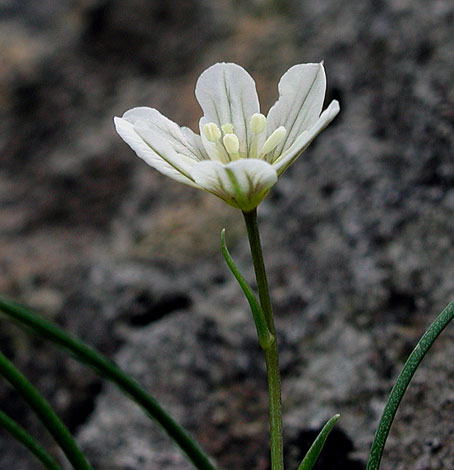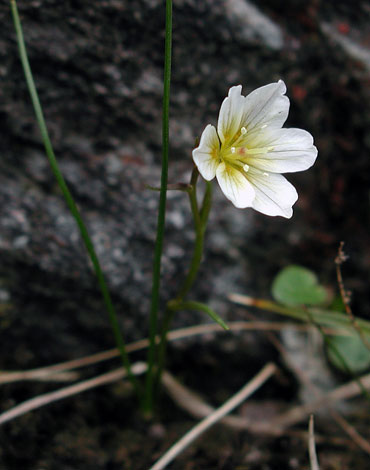Gagea serotina Snowdon Lily RRR DDD N


It is with great sadness that I update this page following the name change from Lloydia serotina to Gagea serotina in New Flora of the British Isles Third Edition by Clive Stace. I'm sure the taxonomic arguments are impeccable but this is a plant named after one of the pioneers of Welsh Botany: Edward Llwyd (or Lhuyd). Around 1688 he discovered a mysterious bulbous alpine growing in Snowdonia and published the find on a list of "more rare plants growing in Wales". The journal he chose was Edmund Gibson's (then Bishop of London) edition of William Camden's "Britannia" (first published in 1586 in Latin). The entry for Snowdon lily was this:
"A certain rush-leaved bulbous plant having a one-seeded vessel on top of an erect stalk about nine inches high on the high rocks of Snowdon viz: Trigvylchau y Clogwyn du ymhen y Gluder Clogwyn Yr Ardhu Crib y Distilh".
Llwyd called it Bulbosa alpina and hadn't actually seen it in flower. It was already known from Europe and had had several names given to it before eventually becoming Lloydia serotina (Linnaeaus) Salisbury ex Reichenbach in 1830. There are about 20 species in the Lloydia genus.
This is a very rare alpine which grows in awkward places. All of the known specimens in the British Isles are in Snowdonia and most are on inaccessible ledges so you can only see them through binoculars or by abseiling from the mountain top. Access for these plants is not as bad as for some alpines but you do have to walk the length of the Llanberis valley or, if you can afford it take the train, then along a very narrow path which eventually disappears into a rock field and has plenty of opportunities to fall down the steep slope into Llyn Du'r Arddu. It still grows on the same crags as those where Edward Lhuyd found it in the 17th century.
A few plants aren't on ledges and crags and do grow at photographable height but others are a little higher up. One year I even found one plant myself which no-one knew about near Cwm Idwal in the next valley but it had been eaten by the next year which is why most plants which flourish are where sheep can't safely graze. These photographs are from the cliffs of Clogwyn Coch on Snowdon itself.
The flower is nearly always in shade so the light levels are usually very poor for photography.
Snowdon, Clogwyn Coch cliffs, North Wales, LHS: 31st May 2002 RHS: 2nd June 2004
Added on January 28th 2005, augmented 9th February 2007, updated 28th May 2009, updated Se3 3rd May 2010, updated 31st May 2012, updated Feb 5th 15











